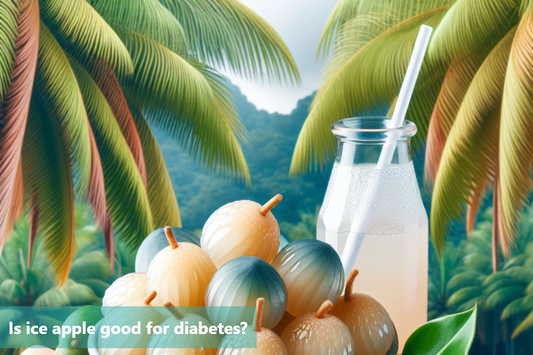Diabetes is a prevalent health condition that affects how your body processes glucose, either due to insufficient insulin production or cells not responding to insulin effectively. Managing diabetes often involves a combination of medication, physical activity, and dietary choices. When it comes to diet and nutrition, the selection of foods can play a crucial role in managing blood sugar levels.
One such food that has sparked interest in the diabetes community is rajma, also known as kidney beans. Rajma is a versatile legume that is commonly used in various cuisines. Many individuals wonder if incorporating rajma into their diet can be beneficial for managing diabetes. The nutritional composition of rajma includes high fiber content, plant-based protein, essential vitamins, and minerals. These nutrients are essential for overall health and may offer potential benefits to individuals with diabetes.
Glycemic Index of Rajma (Kidney Bean)
-
The glycemic index (GI) of rajma (kidney beans) is moderate to low, which means it has a relatively mild impact on blood sugar levels compared to high-GI foods. The exact GI of rajma can vary depending on factors such as the variety of beans, cooking method, and other foods consumed alongside it. However, in general, kidney beans have a GI ranging from around 20 to 50.
-
The moderate GI of rajma is attributed to its high fiber and protein content. Fiber slows down the digestion and absorption of carbohydrates, leading to a gradual rise in blood sugar levels. Additionally, protein further helps to stabilize blood sugar levels by slowing down the emptying of the stomach and reducing the glycemic response to meals.
-
Incorporating rajma into meals can be beneficial for individuals with diabetes as part of a balanced diet. Pairing rajma with non-starchy vegetables, whole grains, and healthy fats can further help mitigate any potential spikes in blood sugar levels.
-
However, it's important to monitor portion sizes and consider individual carbohydrate tolerance when including rajma in your meals. Working with a registered dietitian or healthcare provider can help tailor dietary recommendations to your specific needs and preferences.
Nutritional Benefits of Rajma
Rajma, also known as kidney beans, is a highly nutritious legume that offers a wide array of health benefits, making it a valuable addition to a diabetic-friendly diet.
-
Fiber: Rajma is rich in dietary fiber, which plays a crucial role in regulating blood sugar levels and improving digestive health. The soluble fiber in rajma helps slow down the absorption of glucose, preventing sudden spikes in blood sugar levels.
-
Protein: Rajma is an excellent source of plant-based protein, essential for muscle repair, immune function, and overall satiety. Protein-rich foods like rajma can help individuals with diabetes manage their blood sugar levels and maintain a healthy weight.
-
Vitamins and Minerals: Rajma is packed with essential vitamins and minerals such as iron, potassium, folate, and magnesium. These nutrients are vital for supporting various bodily functions, including heart health, blood pressure regulation, and energy production.
Effects of Rajma (Kiddney Bean) on Blood Sugar Levels
-
Low Glycemic Index (GI): Rajma has a relatively low glycemic index, which means it causes a gradual and moderate increase in blood sugar levels compared to high-GI foods. This slow digestion and absorption can help prevent sudden spikes in blood sugar levels.
-
High Fiber Content: Rajma is rich in dietary fiber, including both soluble and insoluble fiber. Fiber slows down the absorption of sugar into the bloodstream, which can help stabilize blood sugar levels and improve insulin sensitivity over time.
-
Protein Content: Rajma is a good source of plant-based protein. Including protein-rich foods like rajma in meals can help slow down the digestion of carbohydrates and reduce the overall glycemic response of a meal, leading to better blood sugar control.
-
Nutrient Profile: Rajma is also packed with various vitamins, minerals, and antioxidants, which contribute to overall health and may indirectly impact blood sugar regulation.
-
Cooking Method: The way rajma is prepared can influence its effects on blood sugar levels. Cooking methods that involve prolonged soaking and boiling can help reduce the content of anti-nutrients and starches, making rajma easier to digest and less likely to cause spikes in blood sugar.

-
Portion Control: While rajma can be a nutritious addition to a diabetes-friendly diet, portion control is key. Consuming large quantities of rajma or pairing it with high-GI foods may still lead to spikes in blood sugar levels.
-
Mindful Snacking: Consider incorporating rajma into snacks or appetizers. You can make kidney bean hummus or bean salads with kidney beans, veggies, and a light vinaigrette dressing for a healthy snack option.
-
Monitor Blood Sugar Levels: Keep track of your blood sugar levels after consuming meals containing rajma to understand how your body responds. This will help you make adjustments to your diet as needed.
Incorporating Rajma (Kidney Bean) into a Diabetic Diet
-
Rajma Curry: Prepare a delicious and healthy rajma curry using kidney beans, onions, tomatoes, garlic, and spices like cumin, coriander, and turmeric. Use minimal oil and avoid adding excessive salt. Serve it with whole grain rice or roti made from whole wheat flour for a balanced meal.
-
Rajma Salad: Toss cooked rajma with diced tomatoes, cucumbers, bell peppers, and onions. Drizzle with a light vinaigrette dressing and sprinkle with fresh herbs like parsley or cilantro for a refreshing and fiber-rich salad.
-
Rajma Soup: Make a hearty soup by simmering cooked rajma with low-sodium vegetable broth, diced tomatoes, carrots, celery, and spinach. Season with herbs and spices like garlic, cumin, and paprika for added flavor.
-
Rajma Wrap or Burrito: Fill a whole-grain tortilla with cooked rajma, brown rice, lettuce, diced tomatoes, avocado, and a dollop of Greek yogurt or salsa. Roll it up for a portable and nutritious meal option.
Bottomline
Rajma, also known as kidney beans, can be a beneficial addition to the diet of individuals with diabetes. The nutritional benefits of rajma, such as high fiber content, protein, vitamins, and minerals, make it a valuable food choice for overall health and well-being. Studies suggest that consuming rajma may have a positive impact on regulating blood sugar levels, attributed to its low glycemic index.
It is essential to note that while rajma can offer various advantages for individuals with diabetes, it is crucial to consult with a healthcare provider or a dietitian before making significant changes to your diet. This is especially important to ensure that rajma consumption fits well within your overall meal plan and dietary requirements tailored to your specific health needs.
DiabeSmart is the first food range exclusively crafted for diabetics. Enjoy clinically tested, delicious products that let you keep your favorite food habits while managing your blood sugar levels effortlessly.
This Blog post is an initiative by DiabeSmart, to provide accurate and Nutritionist / Doctor approved information related to Diabetes. DiabeSmart is India's first Food brand designed specifically for Diabetics, that has been clinically tested on Diabetics and Pre-Diabetics to deliver 55% - 70% lower Sugar spikes. DiabeSmart is part of Lo! Foods - India's leading brand for Everyday Functional Health foods.














